Lotus Eletre: the world’s first electric hyper SUV revealed with 592bhp
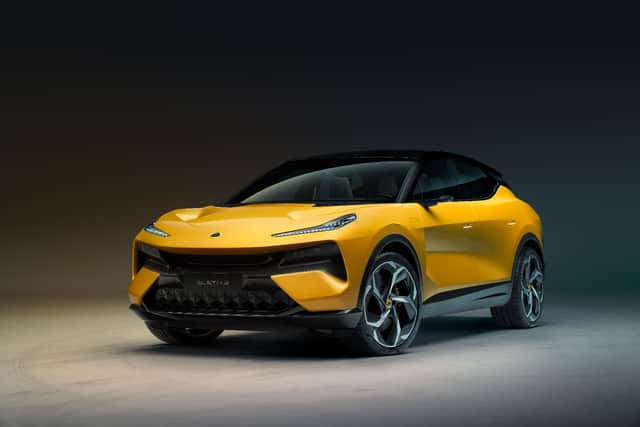

Lotus has lifted the wraps from what it boldly calls “the world’s first electric hyper SUV”, the Eletre. And there’s no denying the headline figures are impressive: 0-62mph in under three seconds; power outputs starting at 592bhp; an all-electric WLTP target range of around 373 miles; and a charge time of just 20 minutes for 248 miles.
What’s not to like?
Understandable then that as the car was officially unveiled this evening, Matt Windle, Lotus Cars MD, declared it as “a momentous point in our history”.
Advertisement
Hide AdAdvertisement
Hide AdBuilding on the “heart and soul” of the latest Lotus sports car – the Emira – and the revolutionary aero performance of the all-electric Evija hypercar, the Eletre combines them as a hyper SUV.
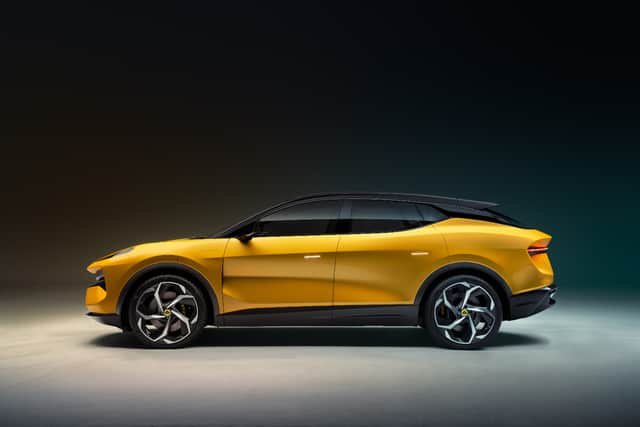

The car is a statement piece of design. From its aggressive-looking front end — complete with a very sharp leading front-edge below ultra-slim daytime running lights and scrolling directional indicators; the headlights, available with matrix technology, are housed below, recessed and partially hidden — to the squat rear-end with its solid red light bar and bold haunches, the Eletre holds a bold presence.
And just in case you wondered, Eletre means “coming to life” in some Eastern European languages.
Is it really a first?
Well, can you name an all-electric SUV which delivers such stunning performance? I can’t.
Advertisement
Hide AdAdvertisement
Hide AdLotus states the Eletre is the first of a new breed of pure electric SUVs. It’s taken the core principles and Lotus DNA from more than 70 years of sports car design and engineering, and evolved them into an all-new lifestyle car for the next generation of Lotus customers.
And the Eletre actually delivers a significant number of firsts for Lotus: it’s the Norfolk company’s first five-door production car; the first model outside sports car segments; the first lifestyle EV; and the most “connected” Lotus ever.
Okay, give me some figures
You’ll have read the headline figures earlier, so I won’t repeat them … mighty impressive as they are.
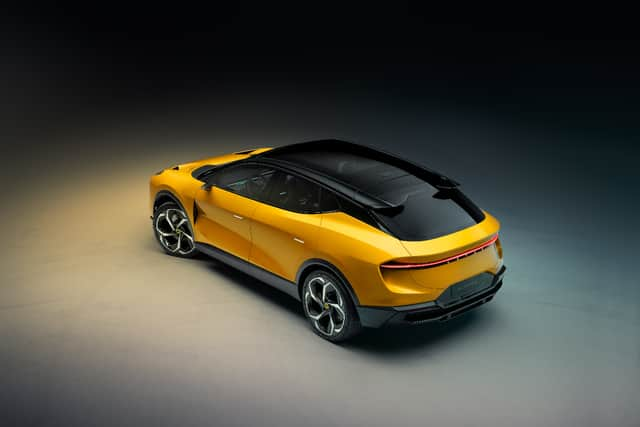

The Eletre is 5,103mm long, 2,135mm wide, stands 1,630mm tall and has a wheelbase of 3,019mm.
Advertisement
Hide AdAdvertisement
Hide AdCapable of a top sped of 161mph, the Eletre has four-wheel drive as standard and has a battery capacity that’s over 100kWh, with power “from” 592bhp. It also comes with the ability as standard to accept 22kW AC charging which, where available.
Built on an all-new 800v dedicated electric vehicle architecture with integrated, high-voltage power distribution system, the architecture uses aluminium and high tensile steel for optimum structural rigidity. It also supports up to 350kW DC charging, allowing for that impressive 248 miles in 20 minutes claim.
The flat skateboard-style battery pack and electric motors are close to the ground to create a low centre of gravity and deliver on the core Lotus commitment of outstanding dynamic performance.
Lotus claims the high energy density of the battery pack provides the best possible balance of performance and driving range.
Advertisement
Hide AdAdvertisement
Hide AdThere are two electric motors, one driving the front wheels and another driving the rear wheels. A three-in-one electric drive system integrates each motor with a controller and reducer, an efficient design which makes the unit smaller and lighter – a very Lotus solution.
Any clever tech?
Lotus claims the Eletre includes the most advanced active aerodynamics package on any production SUV, and intelligent driving technologies such as the world’s first deployable Light Detection and Ranging (LIDAR) system.
In simple terms, LIDAR is a method for determining ranges by targeting an object or a surface with a laser and measuring the time for the reflected light to return to the receiver.
Oh, and the Eletre experience begins even before the driver has reached the car. Pressing the button on the key or smartphone app activates a moment of theatre that’s unique in the automotive world.
Advertisement
Hide AdAdvertisement
Hide AdThe car’s exterior lights run through a short sequence, the active front grille “breathes” — well, that’s how Lotus describes it —and the illuminated flush door handles deploy. The experience is repeated inside the car as the door closes behind the occupant.
“This walk-up sequence is a ‘peacock moment’ – a little ‘showing-off’ that highlights the Eletre’s engaging personality,” Ben Payne, head of studio at the Lotus Tech Creative Centre, said. “It’s a visual expression of a car coming to life, and a metaphor for the reinvention of the Lotus business and brand which begins with the Eletre.”
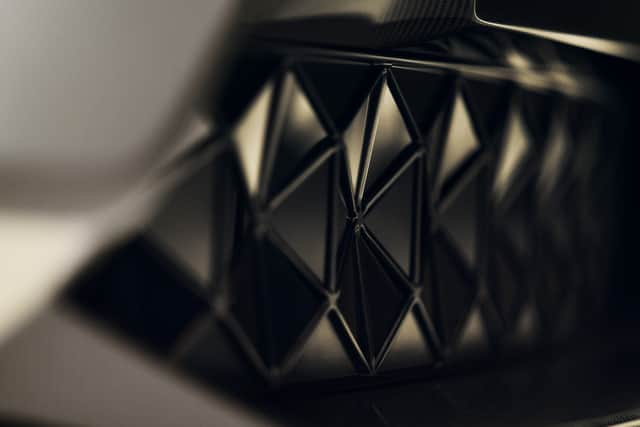

What about the design?
Design-wise I love the fact the bold leading edge of the Eletre’s bonnet continues round into the front wing, wheel arch and ultimately the length of the vehicle as a feature line. It cleverly splits the design in two: above are the Eletre’s taut and muscular lines, while below are the aerodynamic elements.
There’s a nice touch at the front. Low down is the Eletre’s active front grille, a network of interconnecting triangular petals that dominate the central section. Intricately designed, they remain closed when the car is at rest or when there’s a need to reduce drag during driving. They open in a distinctive pattern to feed air into the radiator, allowing the Eletre to “breathe” when cooling of the electric motors, battery pack and front brakes is required.
Advertisement
Hide AdAdvertisement
Hide AdAll the SUV’s black components are finished in carbon fibre while the body panels are aluminium.
The rear is dominated by the unique cantilevered carbon fibre “floating” split roof spoiler, a motorsport-inspired design feature that evokes race car winglets.
There’s not a lot of glass?
You’re correct. The Eletre does have a relatively narrow, glass area, but that, combined with the aggressive rake of the windscreen — which is clearly visible in profile — simply enhances the SUV’s taut stance.
There’s also a unique floating D-pillar, engraved with the Eletre wordmark and featuring an innovative air blade which aids drag reduction. It’s an aerodynamic performance enhancement taken directly from the front bumper of the Emira.
Advertisement
Hide AdAdvertisement
Hide AdEach door mirror is replaced by an electric reverse mirror display (ERMD), which houses three different cameras – one for the rear-view mirror, a second to help create a 360-degree view of the car from above to aid parking, and a third that’s part of the intelligent driving technologies.
It works in tandem with the LIDAR system to deliver autonomous driving capability. The car rides on 23-inch machine-cut split-finish five-spoke alloys with carbon fibre inserts to aid air flow and ceramic composite 10-piston caliper brakes.
What’s it like inside?
Impressive. Although the car is shown with four individual seats, this is available to customers alongside the more traditional five-seat layout. There’s also a fixed panoramic glass sunroof.
The driver-focused cockpit and high centre console are inspired by the Lotus Emira and Evija, and is aimed at creating a cossetted feeling.
Advertisement
Hide AdAdvertisement
Hide AdSustainability has been a core focus of the design team, which has worked with leading supplier Kvadrat on material choices.
The interior uses premium feel and highly durable man-made microfibres on the primary touchpoints, and an advanced wool-blend fabric on the seats. It is 50% lighter than traditional leather, allowing for further weight savings.
Looks like there’s a lot of tech in the cabin
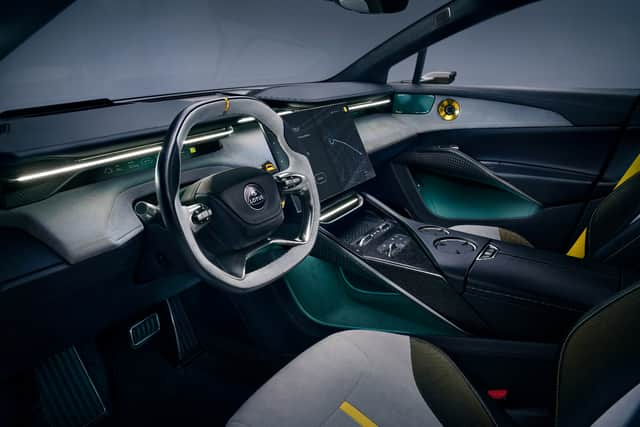

Oh yes. Lotus claims the infotainment experience in the Eletre “sets new standards in the automotive world, with pioneering and innovative use of intelligent technologies”.
Below the instrument panel a blade of light runs across the cabin, sitting in a ribbed channel that widens at each end to create the air vents. While it appears to be floating, the light is more than decorative and forms part of the human machine interface.
Advertisement
Hide AdAdvertisement
Hide AdIt changes colour to communicate with occupants, for example, if a phone call is received, if the cabin temperature is changed, or to reflect the vehicle’s battery charge status.
Ahead of the driver the traditional instrument cluster binnacle has been reduced to a slim strip less than 30mm high to communicate key vehicle and journey information. It’s repeated on the passenger side, where different information can be displayed, for example, music selection or nearby points of interest.
I spotted the large touchscreen …
Yes, difficult to miss it. It’s the latest in OLED touch-screen technology, a 15.1-inch landscape interface which provides access to the car’s advanced infotainment system. It automatically folds flat when not required.
Information can also be displayed to the driver via a head-up display featuring augmented reality technology, which is standard equipment on the car.
Advertisement
Hide AdAdvertisement
Hide AdWhile every element of the Eletre can be controlled digitally, certain key controls are duplicated with analogue switches — another nod to the simplicity for which Lotus is famed. Voice control through advanced speech recognition technology is also available.
… and the steering wheel looks lightweight?
You’d be correct. It is, apparently, “technical, compact and premium” aimed at delivering “maximum comfort, performance and usability”.
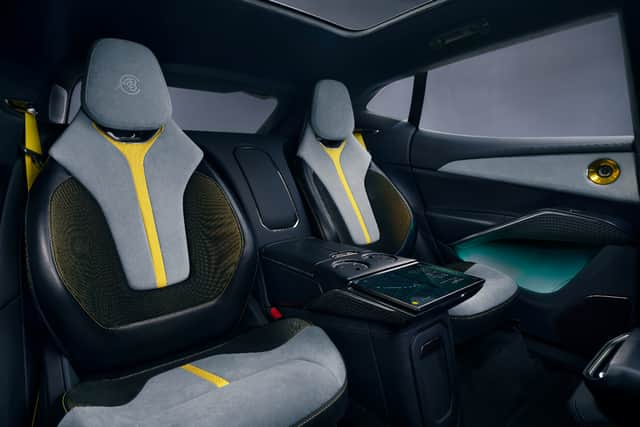

And while Lotus acknowledges the steering wheel is “visually lightweight”, it houses switchgear for the adaptive cruise control and infotainment system. Both it and the driver’s seat move back to create more space for ingress and egress, returning to the pre-set position as the door is closed.
Is it being built in Britain?
Sadly, no. Lotus has been very clever and created the strapline “Born British, Raised Globally”. Key attributes of the Eletre have been defined by the development team at Hethel, Norfolk — the home of Lotus since 1966 — and supported by collaborative work with teams in China, Sweden and Germany.
Advertisement
Hide AdAdvertisement
Hide AdThe overall exterior and interior design has been led by an international team based at the Lotus Tech Creative Centre in Warwickshire, UK.
But the car is actually the first in a new range of premium lifestyle performance electric vehicles to be built at an all-new state-of-the-art production facility in Wuhan, China.
All that’s missing is the price
I thought you might ask that. Not surprisingly, Lotus is remaining tight-lipped on the price till much closer to the Eletre’s on-sale date later this year. But I strongly believe it’ll start around the £100,000 mark. First customers will get their Eletre in 2023.